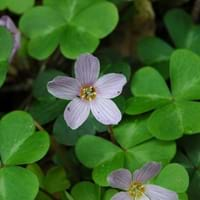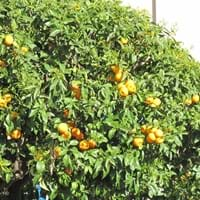Life Span
Perennial
Perennial
Origin
Western United States, Canada
Southeastern Asia, India, China
Types
not available
Not Available
Habitat
Moist woods, Redwood forests
Farms, Warmer regions
USDA Hardiness Zone
7-9
9-11
Sunset Zone
4, 5, 6, 7, 8, 9, 14, 15, 16, 17, 18, 19, 20, 21, 22, 23, 24
H1, H2, 8, 9, 12, 13, 14, 15, 16, 17, 18, 19, 20, 21, 22, 23, 24
Habit
Spreading
Oval or Rounded
Flower Color
White, Purple, Pink, Lavender
White, Red, Purple
Flower Color Modifier
Bicolor
Bicolor
Fruit Color
Not Available
Orange
Leaf Color in Spring
Green
Dark Green
Leaf Color in Summer
Green
Dark Green
Leaf Color in Fall
Green
Dark Green
Leaf Color in Winter
Light Green
Light Green
Leaf Shape
Heart-shaped
Ovate
Plant Season
Spring, Summer, Fall, Winter
Spring, Summer, Fall, Winter
Sunlight
Partial Sun, Partial shade, Full Shade
Full Sun
Growth Rate
Very Fast
Medium
Type of Soil
Loam
Loam, Sand
The pH of Soil
Acidic, Neutral
Acidic, Neutral, Alkaline
Soil Drainage
Average
Well drained
Bloom Time
Early Spring, Spring, Late Spring, Early Summer, Summer, Late Summer, Early Fall, Fall
Early Spring, Spring, Late Winter
Tolerances
Drought
Drought
Where to Plant?
Container, Ground, Pot
Ground
How to Plant?
Divison, Seedlings
Seedlings
Plant Maintenance
Low
Medium
Watering Requirements
Average Water Needs, Medium
Do not water frequently, Requires watering in the growing season, Water every two or three days during warmer months
In Summer
Ample Water
Lots of watering
In Spring
Adequately
Moderate
In Winter
Moderate
Average Water
Soil pH
Acidic, Neutral
Acidic, Neutral, Alkaline
Soil Type
Loam
Loam, Sand
Soil Drainage Capacity
Average
Well drained
Sun Exposure
Partial Sun, Partial shade, Full Shade
Full Sun
Pruning
Remove damaged leaves, Remove dead branches, Remove dead leaves
Remove damaged leaves, Remove dead branches, Remove dead leaves
Fertilizers
All-Purpose Liquid Fertilizer
All-Purpose Liquid Fertilizer
Pests and Diseases
Red blotch
Bacterial fruit blotch, Viruses
Plant Tolerance
Drought
Drought
Flower Petal Number
Single
Single
Fragrant Bark/Stem
No
Yes
Foliage Texture
Medium
Medium
Foliage Sheen
Matte
Glossy
Attracts
Not Available
Birds, Butterflies
Allergy
Not Available
no allergic reactions
Aesthetic Uses
Ground Cover
Bonsai
Beauty Benefits
Not Available
Not Available
Environmental Uses
Air purification, Provides ground cover
Air purification
Medicinal Uses
Antirheumatic, Boils, Opthalmic, Rheumatism, Sore Eyes, Swelling
Not Available
Part of Plant Used
Flowers, Leaves
Fruits
Other Uses
Culinary use, Employed in herbal medicine, Used As Food, Used for fragrance
Cosmetics, Culinary use
Used As Indoor Plant
No
No
Used As Outdoor Plant
Yes
Yes
Garden Design
Groundcover, Wildflower
Container, Edible, Feature Plant, Fruit / Fruit Tree, Mixed Border, Screening / Wind Break, Topiary / Bonsai / Espalier, Tropical
Botanical Name
OXALIS oregana
CITRUS sinensis 'Washington'
Common Name
Redwood Sorrel
Navel Orange, Washington Navel Orange
In Hindi
Redwood Sorrel
संतरा
In German
Redwood Sorrel
Navel Orange
In French
Redwood Sorrel
Navel Orange
In Spanish
Redwood alazán
Naranja de ombligo o «navel»
In Greek
Redwood Sorrel
Navel Orange
In Portuguese
Redwood Sorrel
Navel Orange
In Polish
Redwood szczaw
Pomarańcza
In Latin
Rumex Redwood
Apelsīns
Phylum
Magnoliophyta
Magnoliophyta
Class
Magnoliopsida
Magnoliopsida
Order
Geraniales
Sapindales
Family
Oxalidaceae
Rutaceae
Clade
Angiosperms, Eudicots, Rosids
Angiosperms, Eudicots, Rosids
Tribe
Not Available
Citreae
Subfamily
Not Available
Not Available
Number of Species
Not Available
Not Available
Importance of Redwood Sorrel and Navel Orange
Want to have the most appropriate plant for your garden? You might want to know the importance of Redwood Sorrel and Navel Orange. Basically, these two plants vary in many aspects. Compare Redwood Sorrel and Navel Orange as they differ in many characteristics such as their life, care, benefits, facts, etc. Every gardener must at least have the slightest clue about the plants he wants to plant in his garden. Compare their benefits, which differ in many ways like facts and uses. The medicinal use of Redwood Sorrel is Antirheumatic, Boils, Opthalmic, Rheumatism, Sore Eyes and Swelling whereas of Navel Orange is Not Available. Redwood Sorrel has beauty benefits as follows: Not Available while Navel Orange has beauty benefits as follows: Not Available.
Compare Facts of Redwood Sorrel vs Navel Orange
How to choose the best garden plant for your garden depending upon its facts? Here garden plant comparison will help you to solve this query. Compare the facts of Redwood Sorrel vs Navel Orange and know which one to choose. As garden plants have benefits and other uses, allergy is also a major drawback of plants for some people. Allergic reactions of Redwood Sorrel are Not Available whereas of Navel Orange have no allergic reactions respectively. Having a fruit bearing plant in your garden can be a plus point of your garden. Redwood Sorrel has no showy fruits and Navel Orange has showy fruits. Also Redwood Sorrel is flowering and Navel Orange is not flowering . You can compare Redwood Sorrel and Navel Orange facts and facts of other plants too.





